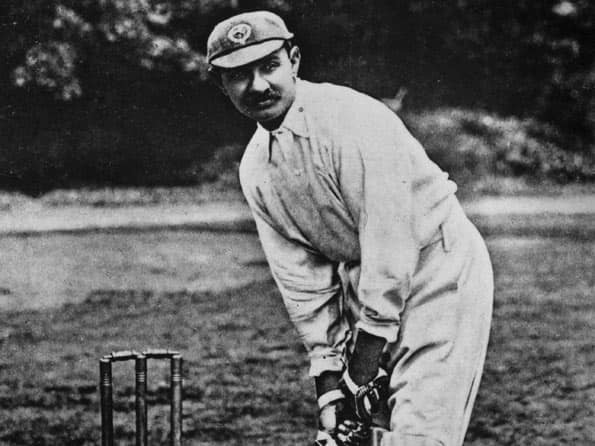
Cricket Country Staff
Editorial team of CricketCountry.
By CricketCountry Staff
Authorities dedicated a portion of the Sussex Cricket Museum in the memory of late cricketer, K. S. Ranjitsinhji, after whom the Indian domestic cricket championship, Ranji Trophy is named during a ceremony in England's Hove city on Wednesday.
Written by Cricket Country Staff
Published: Aug 26, 2011, 01:06 PM (IST)
Edited: Aug 26, 2011, 01:06 PM (IST)


Ranjit Singh used to play for the English cricket team and for Sussex county © Getty Images
By CricketCountry Staff
Hove: Aug 26, 2011
Authorities dedicated a portion of the Sussex Cricket Museum in the memory of late cricketer, K. S. Ranjitsinhji, after whom the Indian domestic cricket championship, Ranji Trophy is named during a ceremony in England’s Hove city on Wednesday.
Acting Indian High Commissioner to United Kingdom, Rajesh Prasad, inaugurated the section of the museum.
Ranjitsinhji, an Indian prince, used to play for the English cricket team and for Sussex county. He has been credited for bringing a new style to batting that revolutionised the game.
Rob Broddie, a librarian at the museum said Ranjitsinhji was closely associated with Sussex for several years.
“He was revered, if you read out history books, he was a very special player, he was infact the greatest player, both himself, his nephew Dalip, Maurice Tate, Arthur Gilligan. We have had some really special players here. If you go back you had the revered David Shepherd, Tony Greg, Nawab Ali Pataudi, the names go on. The club has very rich history but also this very close collection with the Indians, which I have tried here to show, and it’s been rather difficult because I had eight weeks to put it together. This is just a part of it, there is many other archive which I haven’t been able to access,” said Rob.
Broddie praised the late cricketer and said the prince often invited English players to his palace in India.
“He was so generous to the club, a great benefactor and he was always inviting English players to his palace in India and the players would go out there and he would treat them royally,” added Broddie.
The museum is also celebrating 100 years of the first visit to Hove by an official Indian team in 1911.
This website uses cookies so that we can provide you with the best user experience possible. Cookie information is stored in your browser and performs functions such as recognising you when you return to our website and helping our team to understand which sections of the website you find most interesting and useful.
Strictly Necessary Cookie should be enabled at all times so that we can save your preferences for cookie settings.
If you disable this cookie, we will not be able to save your preferences. This means that every time you visit this website you will need to enable or disable cookies again.
